Smart Accounts Take Off in Q3 (ERC-4337 Statistics)
Author: Kofi
Over 730,000 ERC-4337 smart accounts have been deployed on Ethereum, Arbitrum, Optimism and Polygon. 53% of those accounts were created in the past month, marking the beginning of a major transition from EOA wallets to smart accounts in the Ethereum ecosystem.
In this article, we will:
Analyze ERC-4337 user behavior on Ethereum, Arbitrum, Optimism and Polygon
Review Bundler and Paymaster API performance
Discuss the future of ERC-4337
ERC-4337 Smart Accounts simplify web3 UX
ERC-4337 is a standard for smart contract wallets, also known as smart accounts, authored by Vitalik Buterin and members of the Ethereum Foundation.
Smart accounts were designed to radically simplify the user experience in web3. With a smart account, you don’t need a seed phrase, you don’t need to download a browser extension, and in many cases you don’t need to pay gas.
ERC-4337 makes this experience possible with a few key features:
Users make pseudo-transactions called UserOperations (UserOps).
Bundlers group batches of UserOps into single on-chain transactions.
Apps can use Paymaster contracts to pay for gas on behalf of users.
Polygon, Optimism, Arbitrum are leading the way
Following the official launch of ERC-4337 in March, Polygon was the first ecosystem to embrace smart accounts. Polygon’s share of monthly active smart accounts stood at 95%+ from April through to July.
This changed in August when CyberConnect launched an airdrop on Optimism, pushing Optimism to 37% market share, and ZTX did an NFT drop that propelled Arbitrum to 51% market share.
Base is next in line as Alchemy launched ERC-4337 infrastructure support for Base last month.
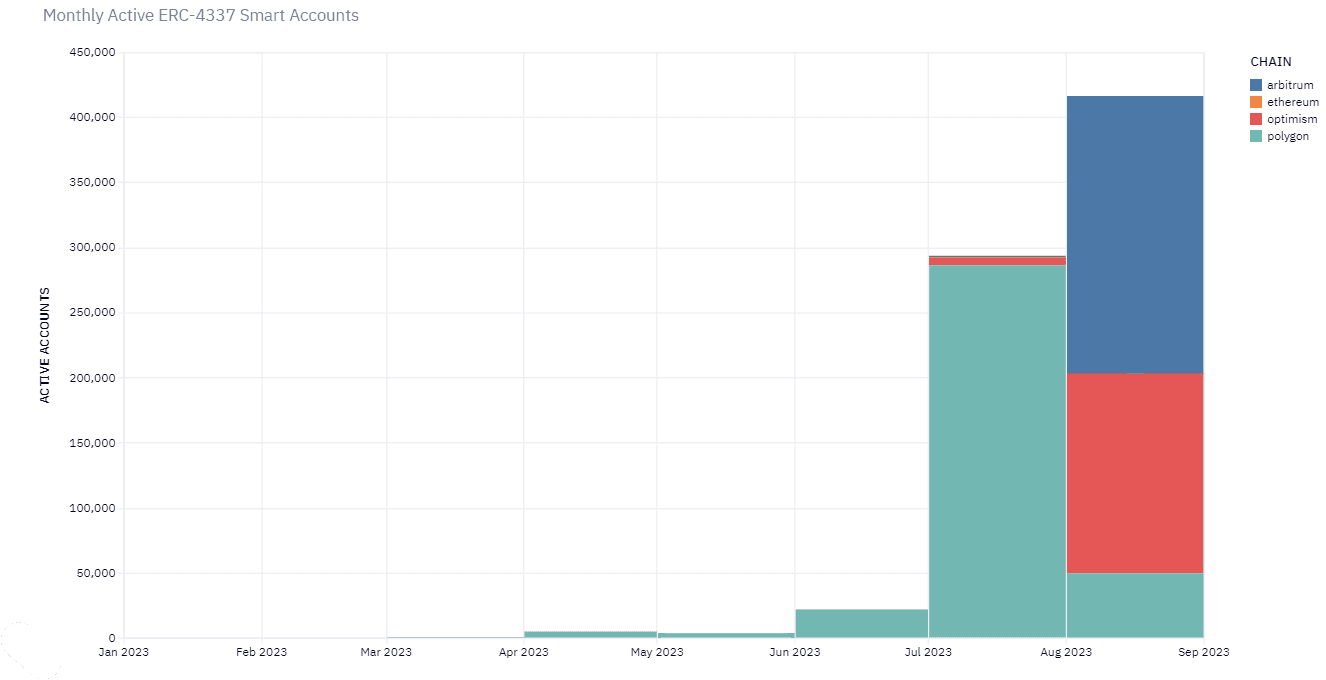
Over 1.6M UserOps have been executed!
When using a smart account you submit User Operations instead of transactions – these are meta-transactions with extra capabilities like the ability to sponsor gas payments. In Q3, the number of all-time UserOps skyrocketed +2,000% from 77,000 to 1.6M!
The top three use cases behind this growth surge are:
1. CyberConnect
CyberConnect is a web3 social network where every user account is an ERC-4337 smart account, has been the most active app in the ecosystem. In July, 95% of UserOps were driven by Cyberconnect and its associated NFTs.
2. ZTX
ZTX, a NFT project where users can customise 3D avatars, generated more than 200,000 UserOps on Arbitrum in August.
3. Payments
Smart accounts have submitted more than 30,000 UserOps to transfer value using ETH, MATIC and stablecoins.
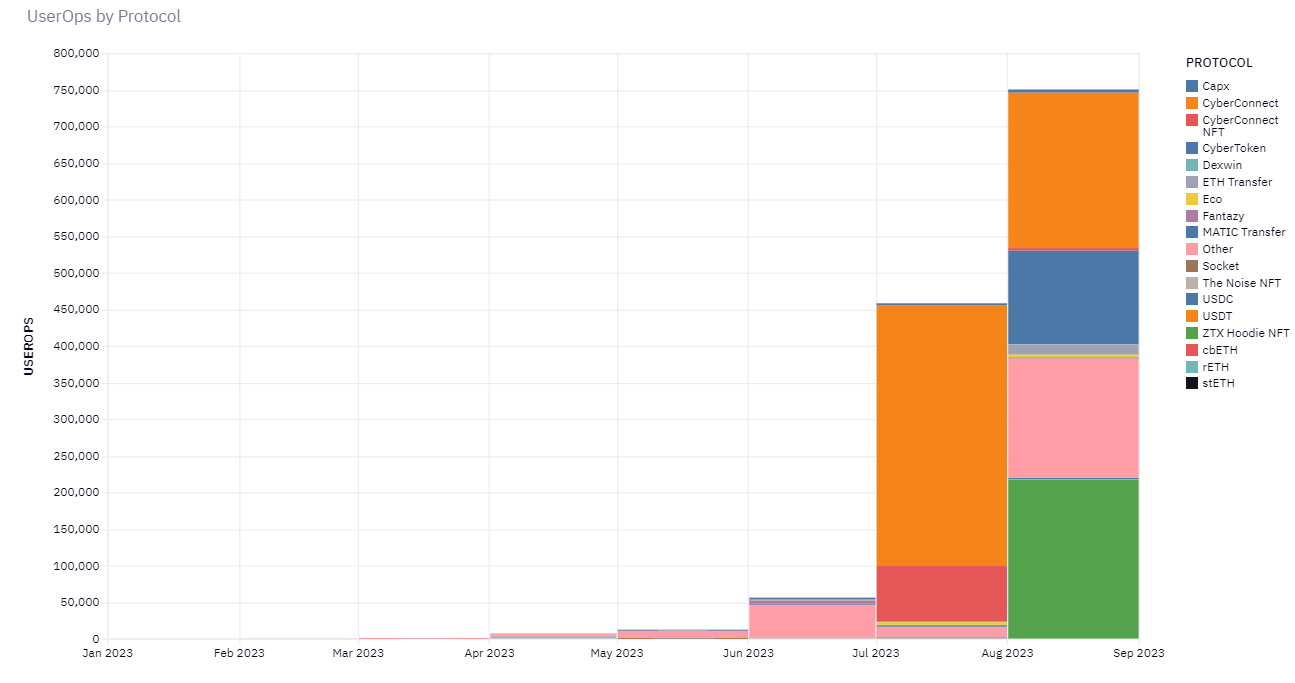
Apart from CyberConnect, other interesting use cases we've seen smart accounts adopt include:
Seamless web3 payments with Beam
Web3 gamers playing Fantazy on Polygon
Liquid Staking users minting and transferring LSDs (e.g. stETH, rETH) on Ethereum
Bundles contain 1 user op on average (for now)
One of the open secrets of the ERC-4337 ecosystem is that most bundlers currently don't bundle UserOps, instead the majority of operators relay a single UserOp in each transaction.
97% of successful bundle transactions have contained only one UserOp. This is largely due to there being only 1 UO in the mempool at time of bundling. Alchemy’s bundler can, and does, bundle more than 1 UO during high usage.
Relaying single UserOps has worked so far because demand for bundling has been low, but as ERC-4337 adoption grows bundlers will need to start bundling a higher quantity of UserOps in each bundle to meet higher levels of throughput and reduce costs for users.
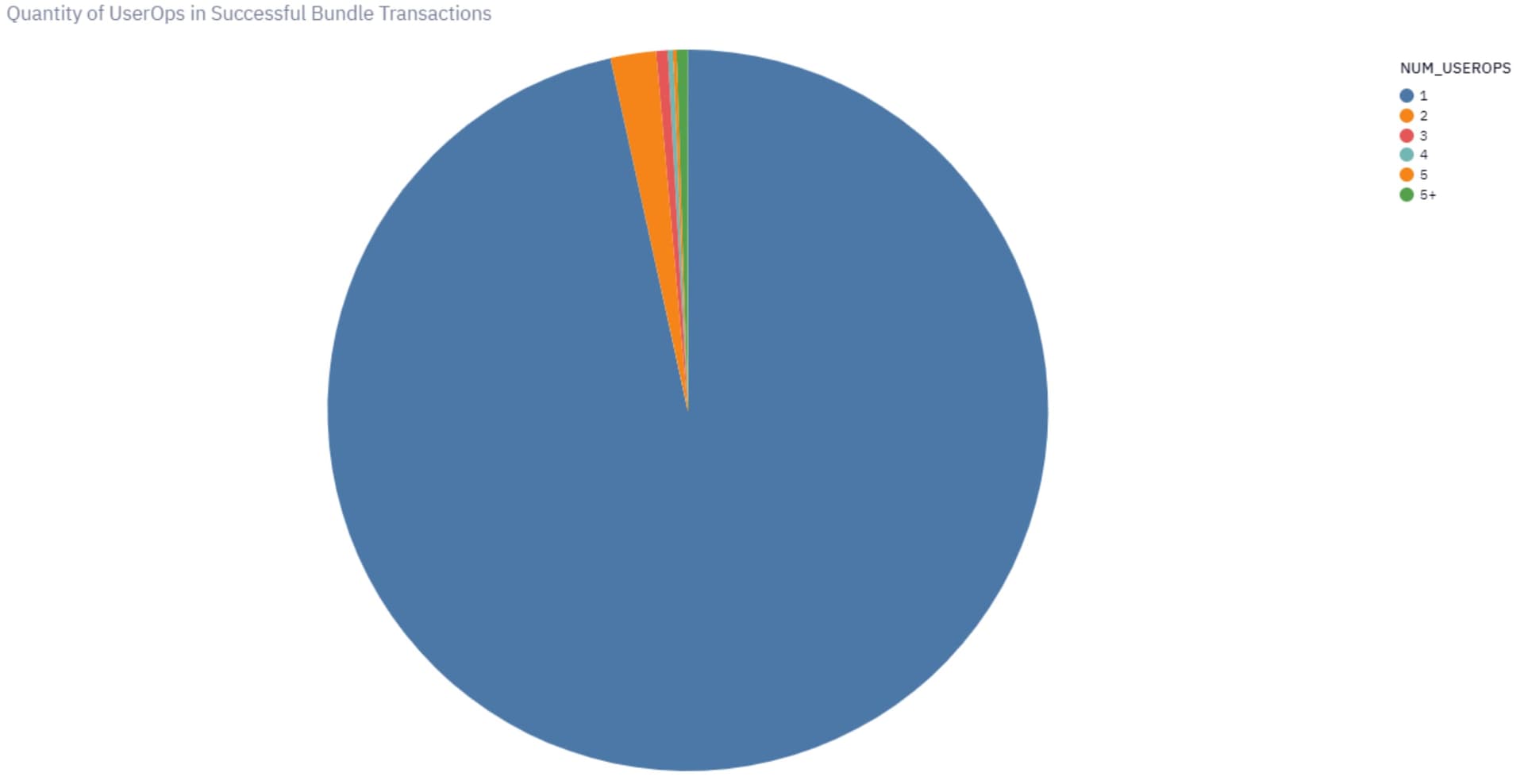
As ERC-4337 adoption grows, bundlers will receive more transactions. It's important that bundler devs continue to evaluate how these bundlers perform economically and operationally so that best practices can spread and common issues can be resolved early.
99.2% of UserOps had their gas fees paid by a Paymaster
Paymasters provide a standardized interface for applications and wallets to create flexible gas policies such as subsidizing gas fees for their users or allowing users to pay for gas in stablecoins or any other ERC-20 token. As of this article, 99.2% of UserOps have had their gas fees paid using a paymaster.
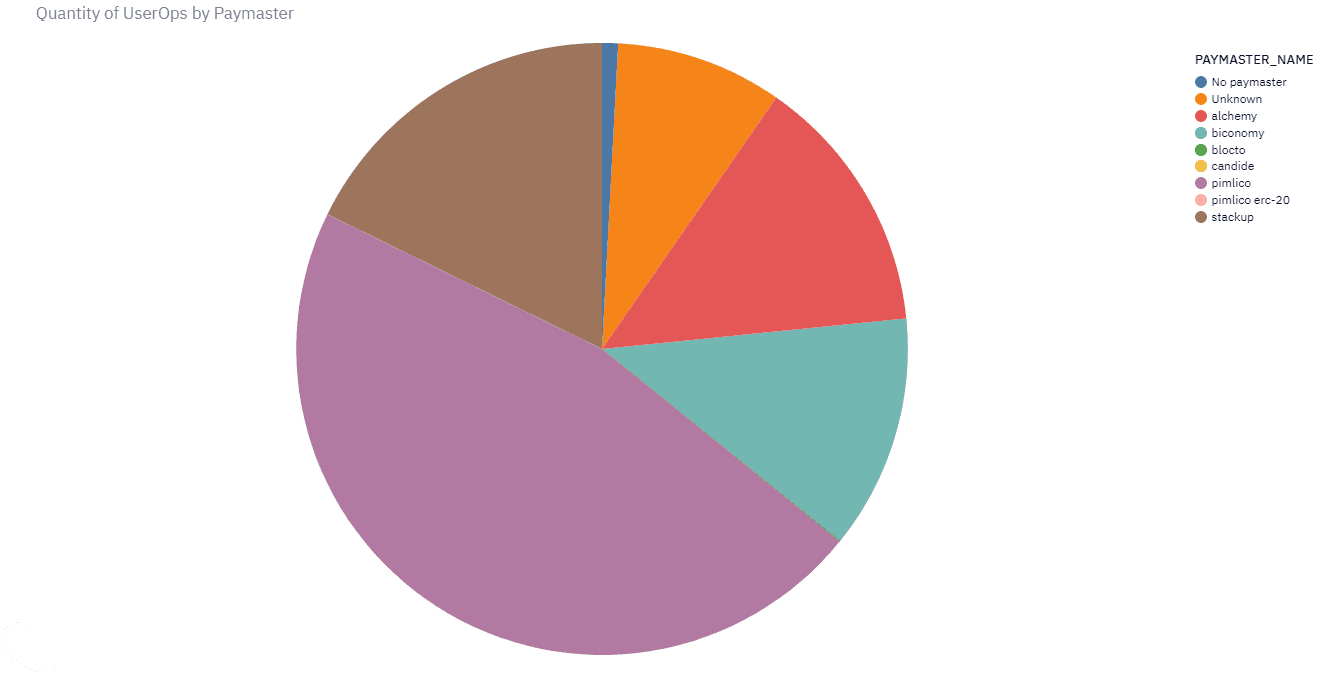
Apps have spent over $430,000 to sponsor gas
With a smart account, users can often transact without any gas in their wallet because apps will sponsor gas on their behalf. This gas sponsorship feature of ERC-4337 empowers apps to simplify the user experience – especially for new users who don’t have any tokens yet.
Paymaster sponsorships have quickly surpassed $430,000. This is a testament to the enormous value that ERC-4337 smart accounts provide to application developers. In the coming months, we expect many more apps to adopt smart accounts in order to abstract gas away from the user experience.
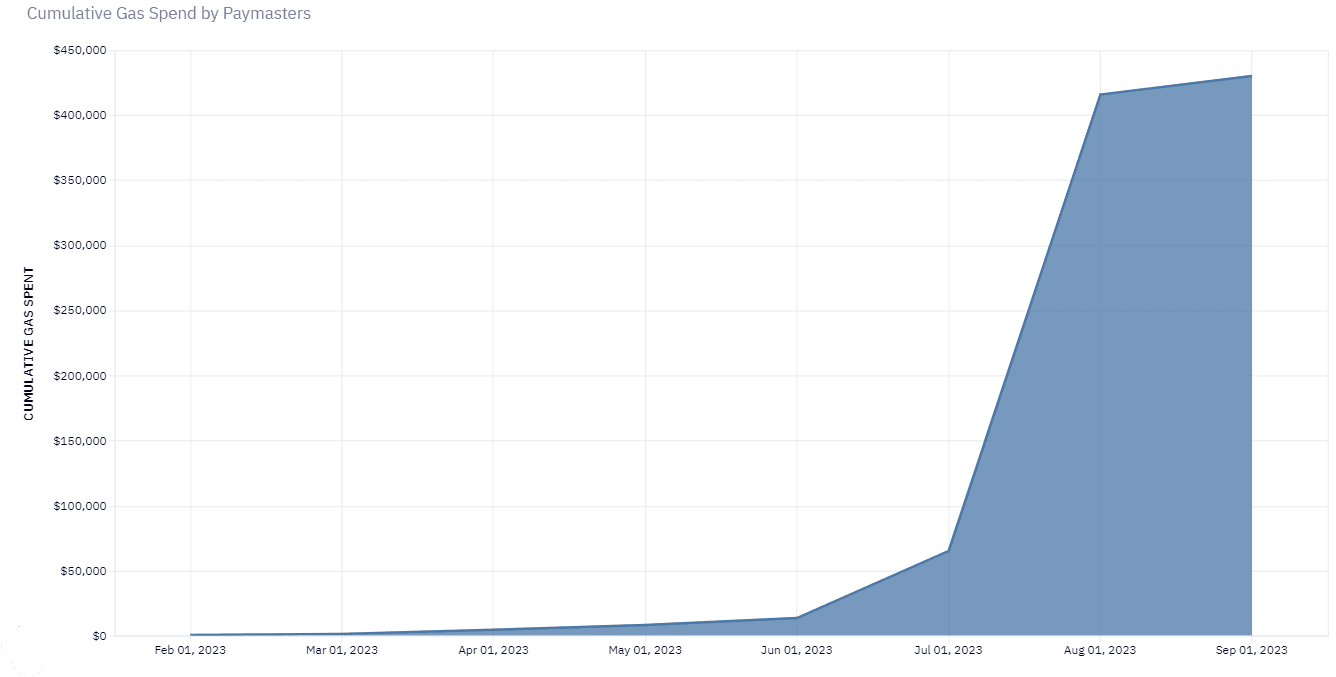
90% of Smart Accounts have made less than 5 UserOps
Today, most smart accounts have submitted fewer than five UserOps, but the trend is up and to the right. Expect engagement on smart accounts to increase significantly in the coming months as more users, apps, and wallets adopt ERC-4337.
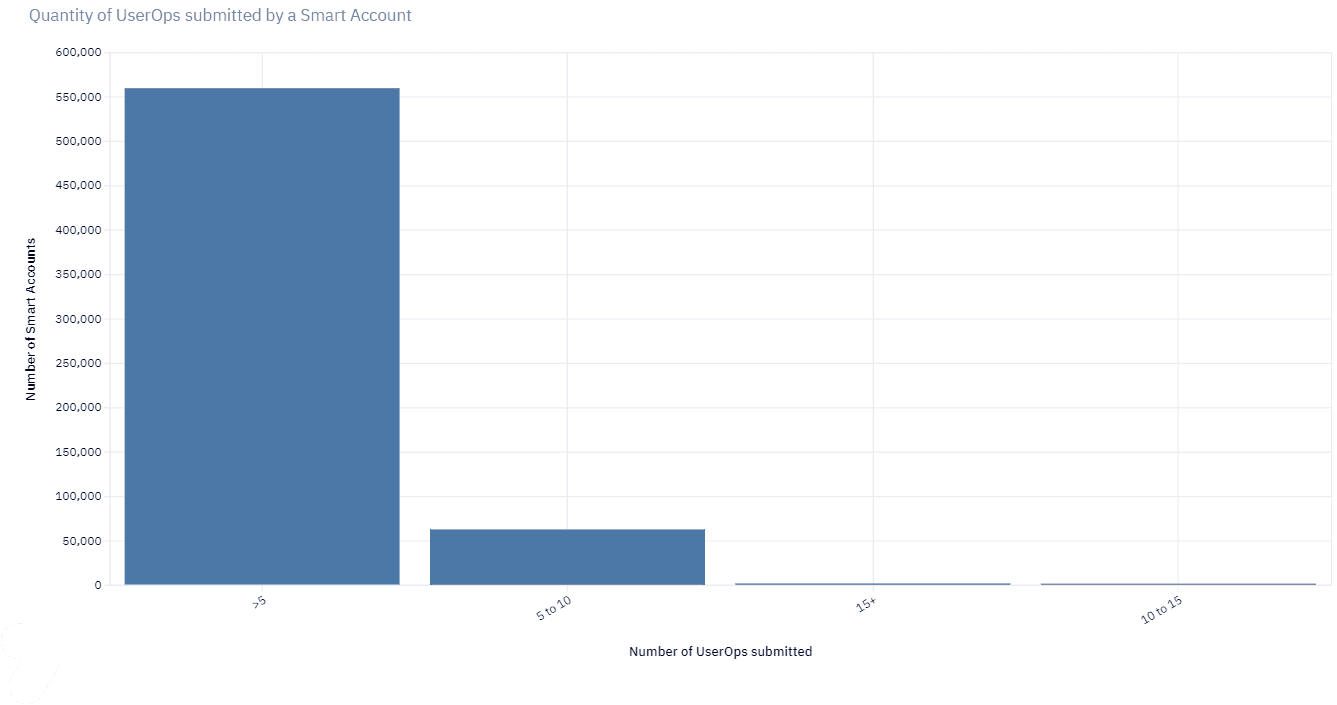
What comes next?
The ERC-4337 ecosystem is in the early stages of its development and there is a lot of work to be done. Specific areas where progress is needed include:
1. Try a Smart Account Application
To learn how pioneering web3 application developers are leveraging ERC-4337, try one of the popular apps for yourself! Sign up for and send money using Beam or create an account on CyberConnect, a gasless web3 social media network!
2. Start Adopting Smart Accounts
Account Abstraction is a paradigm shift that opens up the web3 design space, and can improve the user experience. To start building, explore some of these guides:
3. Learn About ERC-6900
Learn about the current standard interfaces for applications, wallets, and plugins by reading the ERC-6900 specification and forum posts from the ERC-6900 community. If you're a builder or researcher, you can even engage in the conversation to help refine the standards.
If you’re bullish on modular smart accounts like us, start building modules that can be adopted by smart contract wallets. Plugins created using ERC-6900 will enable smart accounts to add extended functionality to SCWs, such as setting spending limits, automating transactions, and defining role-based account controls
4. Increase Number of UOs per Bundle
Because users benefit from lower fees due to amortized costs when more UOs are bundled into a single bundled transaction, it is important that bundlers increase the number of UOs/bundle.
Bundlers also benefit because they spend less on transactions while charging the same gas premium on every UserOp. Research should continue on optimal bundling strategies so that best practices can spread across all bundler operators.
Note: During periods of high volume Alchemy's Bundler lands bundles that near the total gas available per block.
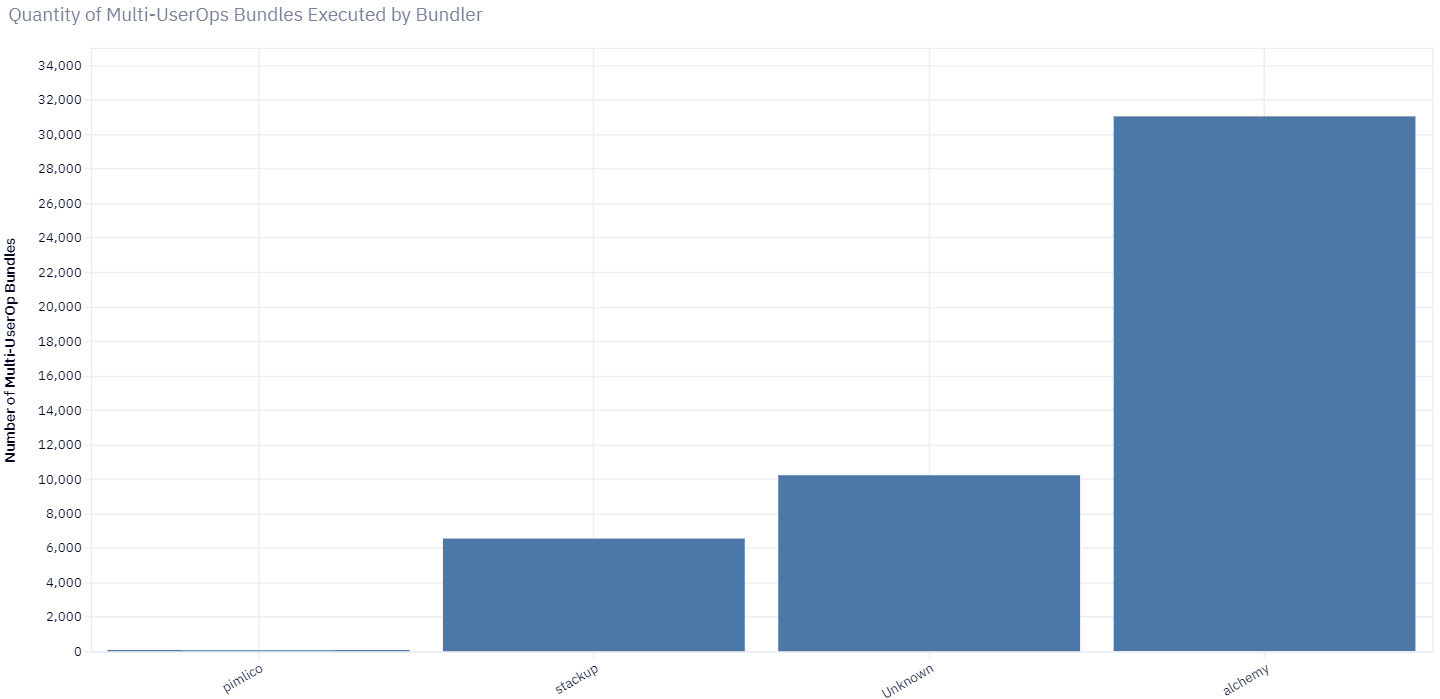
5. Launch the ERC-4337 Mempool
Work is currently underway to create a public ERC-4337 mempool where UserOps will exist before being bundled. This alternative mempool is a big shift from the current market where bundlers form exclusive relationships with each application and wallet.
Before the mempool becomes active, open issues to solve include designing mechanisms to determine which bundler gets to make the next bundle and democratizing access to ERC-4337 mempool data.
Alchemy Newsletter
Be the first to know about releases
Sign up for our newsletter
Get the latest product updates and resources from Alchemy
By entering your email address, you agree to receive our marketing communications and product updates. You acknowledge that Alchemy processes the information we receive in accordance with our Privacy Notice. You can unsubscribe anytime.
Related articles

How to Build an AI Trading Bot: A Complete Developer's Guide (2026)

From One Node to Cortex: Serving Blockchain Data at 100K TPS, Globally

What Is the Ethereum Fusaka Upgrade? Dev Guide to 12 EIPs
A practical breakdown of the Fusaka upgrade, explaining the 12 core EIPs and how they change data availability, cryptography, gas costs, and validator operations across the Ethereum stack.